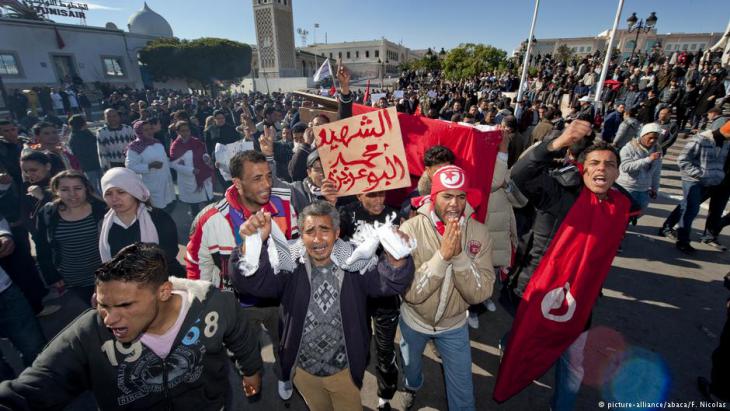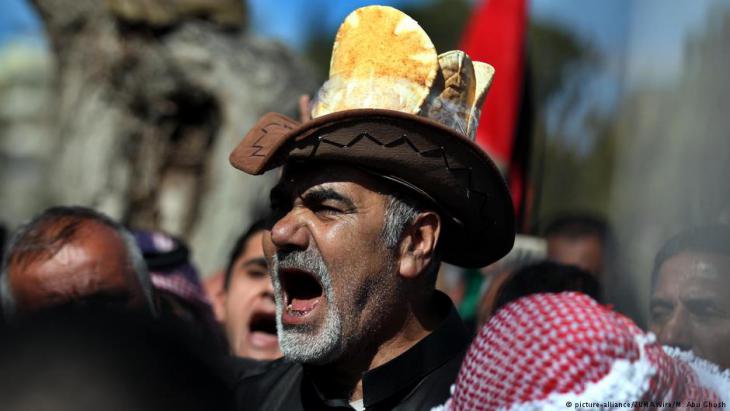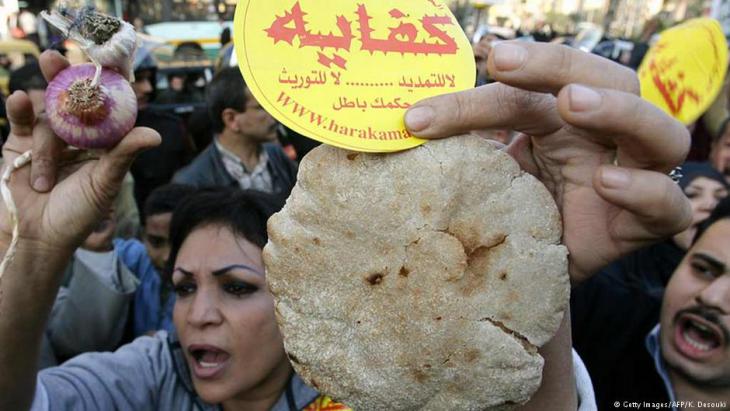The economics of Arabellion

No-one can be in any doubt that the revolutions of the Arab Spring have developed to become sectarian in nature, at times extremely so. This is not, however, to forget that their causes and motives were and are mainly socio-economic. This realisation is not only essential when analysing what triggered the Arab Spring revolutions. It is also, and this is even more important, prerequisite for locating possible solutions that will really get to grip with the problems.
Analyses have been circulating recently about the sectarian nature of the many uprisings and wars in the Arab world, from Iraq to Syria, Lebanon, Bahrain, Yemen, Sudan, and others, but that doesn’t explain everything. The interpretations and conspiracy theories all coalesce around the contention that external interference in the wars of these beleaguered countries is the main reason why people are losing their lives fighting each other and destroying their own countries in their quest to control them – with foreign help, naturally.
Overshadowed by sectarianism
It is not disputed that there is a clear and obvious sectarian dimension to these conflicts, nor that internal and external sponsors exploit such sectarian, and to a lesser degree, ethnic differences in the way they intervene in these conflicts and in the way they pick their local proxies. But the rise of sectarianism, which seems at times to supplant all other differences, should not distract us from other important factors which continue to play a fundamental role in precipitating these conflicts and in stoking the embers when they die down. First and foremost is the economic dimension.
The economic dimension is vital, not just to understand the background to the current wars in the Arab world, but also to understand recent history. After all, it is history that gave rise to these wars, which have led to schisms, the squandering of resources and a sense of inequality among large segments of Arab society. On occasion, all these things have come together, for historical reasons which can and should be analysed alongside the sectarian divisions in these countries.

Until recently, the Alawites in Syria, the Kurds in northern Syria and Iraq, the Shia in Lebanon and Bahrain, the Zaydis in Yemen and the Christians in Sudan were impoverished and neglected by their national governments. They were subordinate to other sects which generally occupied higher economic positions and enjoyed more than their share of state resources, by hook or by crook.
Social deprivation: a catalyst for revolt
Circumstances vary from country to country. Modern Arab states are the product of different population distributions, but social and economic imbalances have gnawed away at their foundations since their inception. The response to these inequalities and the lack of services can be seen in popular uprisings, military coups and armed conflicts, which have occasionally succeeded and often failed, as seen most recently in the "Arab Spring".Over the course of the 20th century, most of these struggles developed under a sectarian, ethnic or regional banner, despite their economic roots. Notwithstanding this, most analyses in the nascent Arab states have ignored the intersection between economics and religion, for various reasons.
The first of the reasons for this is, of course, the encroachment of socialist thinking which came to the fore via military coups in Syria, Egypt, Iraq, Yemen and the Sudan. According to this ideology, a planned economy would eliminate social and regional differences.
The approach failed, mainly because of structural problems, due to the brittle and unsustainable ideology underlying Arab socialism. But it also failed because of external factors, the biggest threat being the presence of Israel at the heart of the Arab world. It still hasn’t abandoned hope of fulfilling the greater dream of a state stretching across all Palestine and much of the Arab world, in accordance with the prophecy of the Torah.

The second reason is the monopolistic control of the ruling classes over the sources of wealth, be they trade or natural resources such as oil and water. This was especially true in Iraq, Yemen and Lebanon, where the ruling classes all belonged to particular religious or ethnic groups.The third reason for the failure to make the connection between economics and ideology is largely psychological, arising out of the above. In certain countries, notably Syria in the late 1960s and Lebanon before and after its civil war, the once downtrodden rose to power. They treated the country's economy as if it were booty wrested from their former overlords – now their time had come to do with it as they wished.
Bread and social justice – the true face of the Arabellion
When the revolutions of the "Arab Spring" came, they did so against a clear economic and class backdrop, albeit they were cloaked with revulsion at the ruling elites, whose corruption, self-enrichment and authoritarian ways had reached unprecedented levels. Bouazizi set himself on fire and sparked a revolution in Tunisia on purely economic grounds, charged with a deep sense of injustice.
Egyptians rebelled against Hosni Mubarak's regime in search of freedom, for sure, but also in search of bread and social justice. Indeed, I would even say that ordinary people joined this overwhelming revolution, which started on the Internet, only because of the miserable living conditions imposed on them by Mubarak's regime and his clique to meet the conditions of the International Monetary Fund.
The same is true of the way opposing forces lined up in the civil wars that were acknowledged as such in Lebanon and later in Iraq following the U.S. invasion and the crumbling of the Baathist state’s steely grip. "Deprivation" is also the slogan with which Imam Musa al-Sadr initiated the Shia political movement in Lebanon, which later produced both Amal and Hezbollah.

The Shia in Iraq used similar messages in their political/military organisations, which took advantage of the collapse of Saddam Hussein's repressive regime to grab power, reflecting the huge sense of hardship and an overwhelming desire to make it right in whatever way possible.
Politics of division
For their part, Yemen and Sudan can look back on decades of political persecution, mismanagement and the neglect of state structures and certain regions. As a result, Sudan has broken down into a Muslim and a Christian state. Yemen could also be threatened with division, even if its denominational borders do not yet correspond to the division of territory.
Syria is the country which has paid the most over the past 7 painful years in a conflict which is clearly sectarian in character. There in particular, the economic dimension has played a decisive role in mobilising the poor on the one hand and paralysing the middle class on the other, although they both belong to the Sunni majority and the regime's Alawite denominational background is clear.
The self-serving economic policies of the state and the prolonged drought in the Euphrates Valley in the early noughties contributed to a burning sense of injustice and unfairness. The loudest protests came from the poor agricultural belts around cities like Damascus and Aleppo, and from smaller towns where the local economies are closely linked to agricultural and livestock production such as Homs and Hama.
Whilst these protests may have taken on an often extreme sectarian flavour, we should not forget their social and economic roots. This realisation is not only a necessary part of the analysis of what exactly triggered the revolutions of the Arab Spring, but also, and this is even more crucial, of what can be done to tackle and eliminate these fundamental problems at the root.
Nasser Rabbat
© Qantara 2018
Translated from the Arabic by Chris Somes-Charlton
Architect and historian Nasser Rabbat is Aga Khan Professor and Director of the Aga Khan Islamic Architecture Program at MIT in the United States.